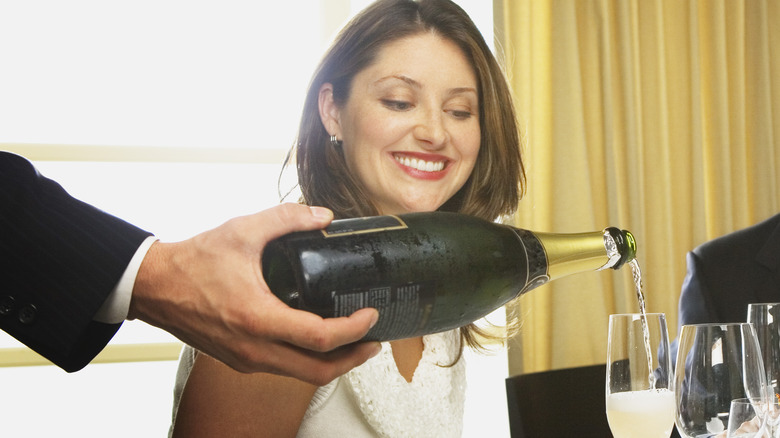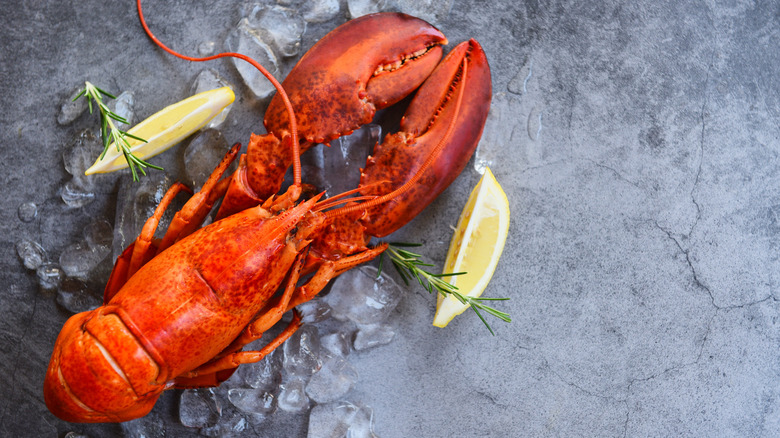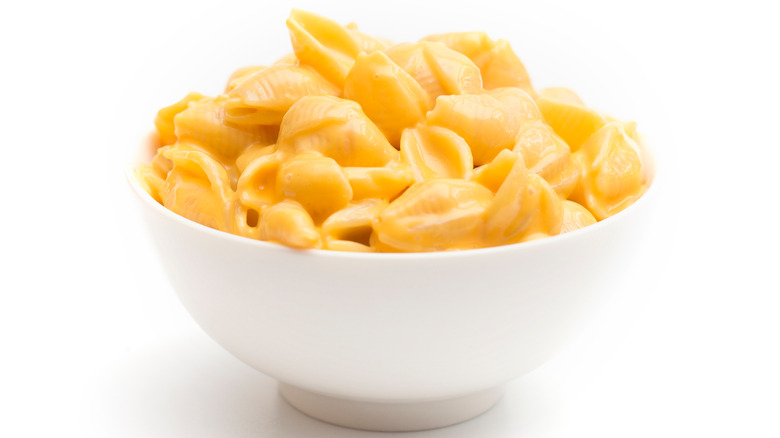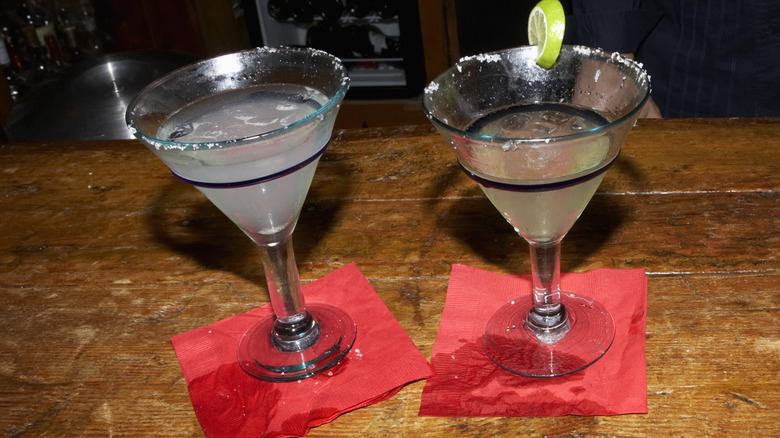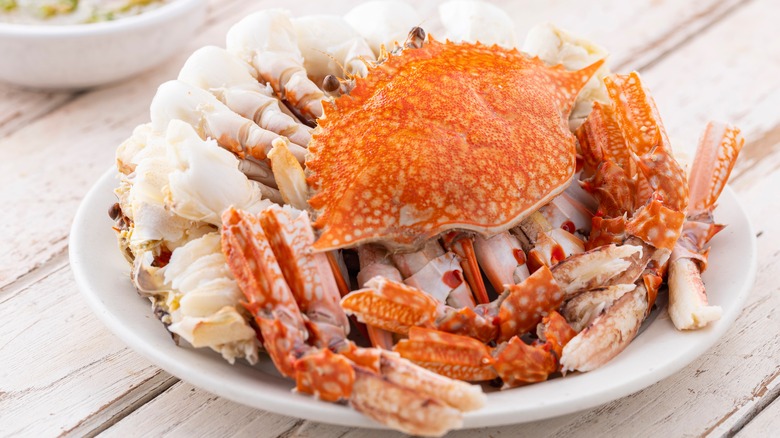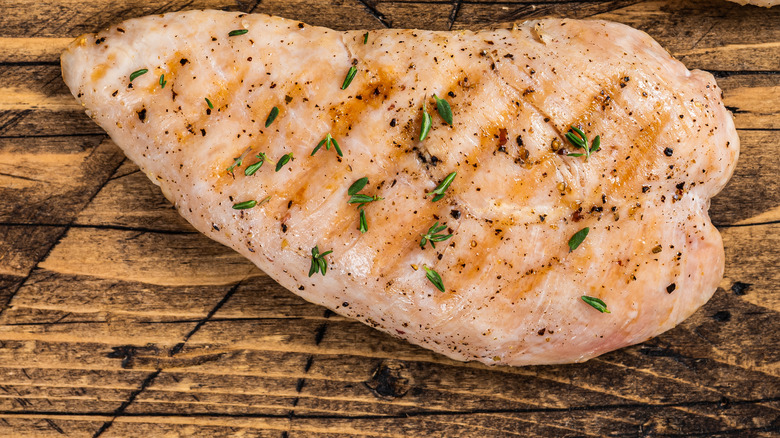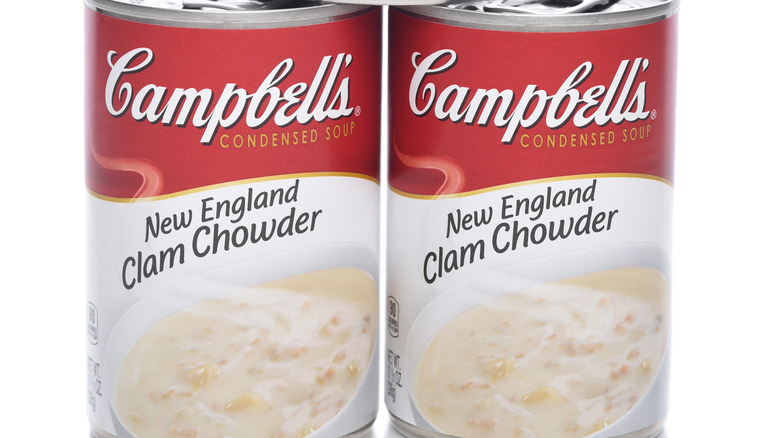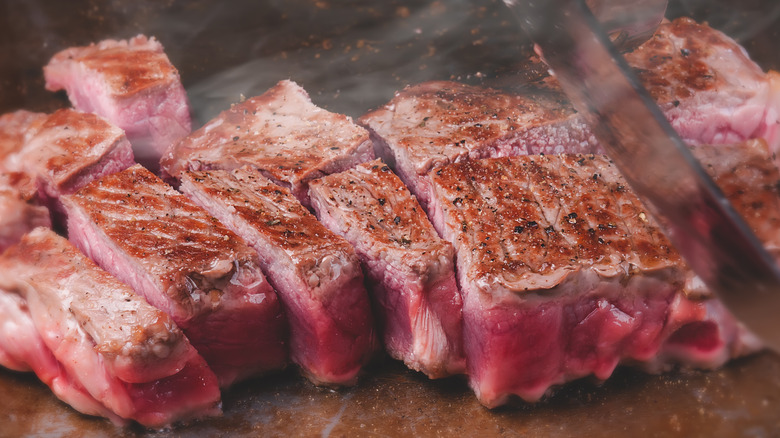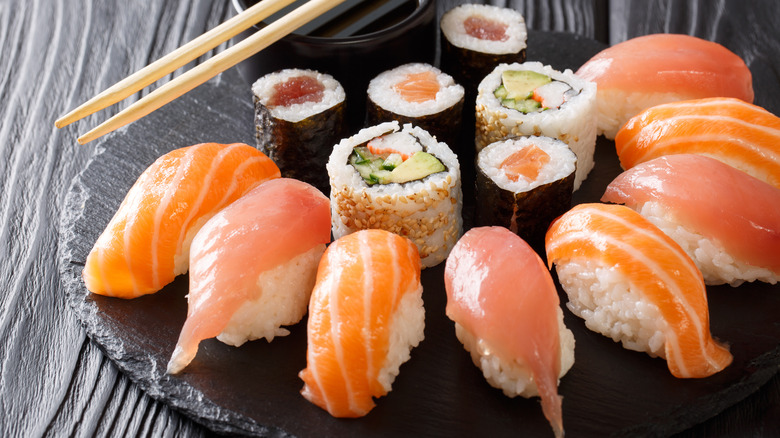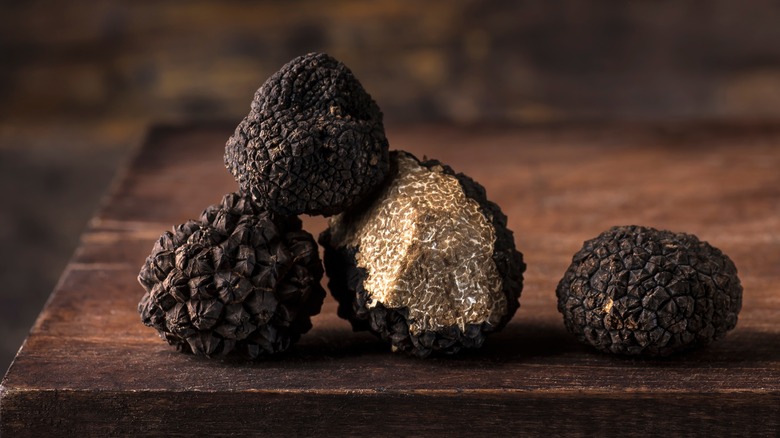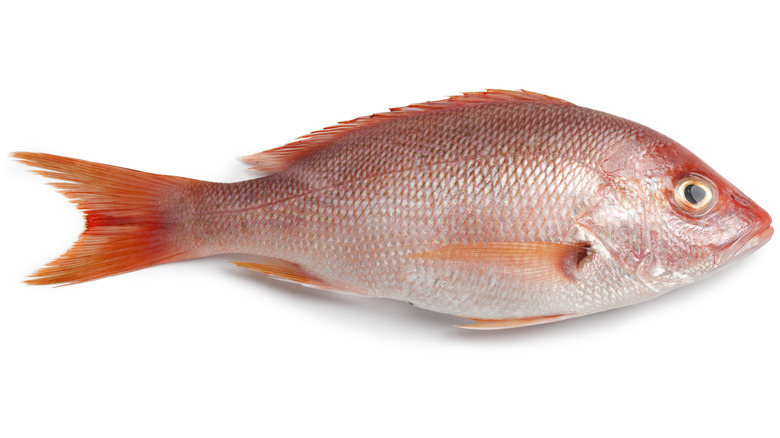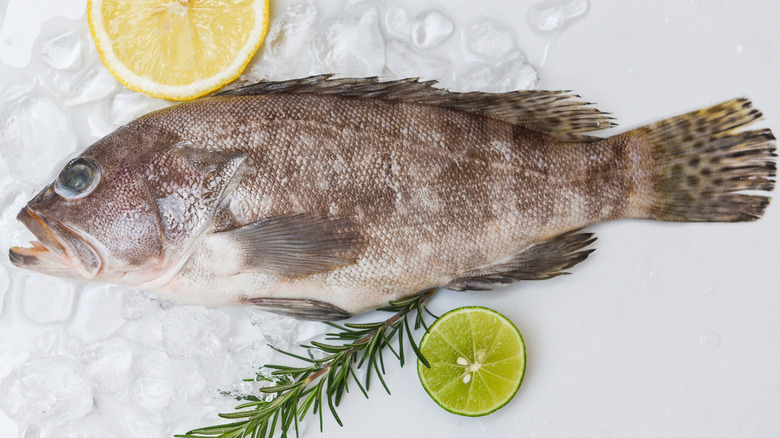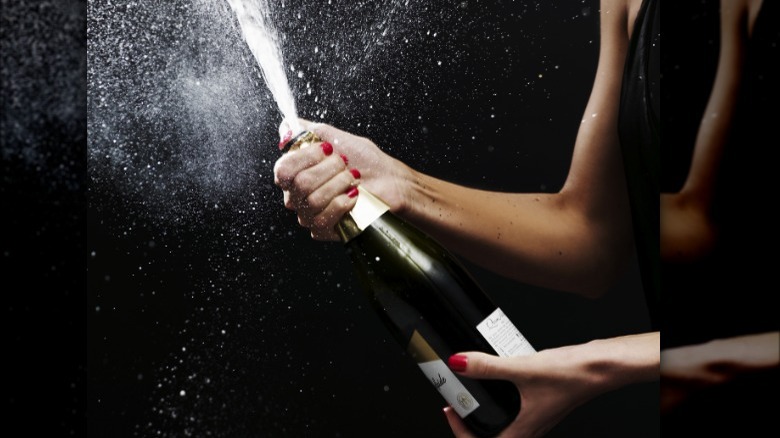Cheap Menu Items You Should Never Order At A Restaurant
P.T. Barnum once proudly declared "there's a sucker born every minute" — except he didn't. In fact, despite the widespread public belief that this cynical point of view came from Barnum, there's no evidence to suggest the legendary U.S. showman ever said such a thing (via Pittsburgh Post-Gazette). Still, regardless of its origin, the sentiment behind the well-known phrase stands. Because folks willing to trick others for their own benefit? They're a dime a dozen.
Now, we're not particularly proud of the fact that human beings can be so deceitful at times (right, Mr. District Attorney?). But morally and ethically scrupulous individuals – like restaurant owners who substitute cheap alternatives for typically expensive foods without alerting the customer — do indeed exist. In fact, if a generally exorbitant menu item is listed for a surprisingly low price and seems too good to be true, it probably is (and may not even be the actual food in question).
Frankly, even if you love a good bargain, which we do, well ... there is no such thing as a free lunch in life. In other words, certain discounted menu items aren't worth your purchase — let alone the paper they're printed on. On that note, we've compiled a list of cheap menu items you should never order from a restaurant. And if you trust our guidance now? You'll thank us later.
Lobster
Lobster's status as a quintessential example of warm-weather indulgence is tough to dispute, but that doesn't make its stature any less absurd considering its history. After all, before the 1880s, the iconic summer food was looked down upon as a meal only fit for the lower classes (via History). Of course, while pre-20th century diners had no interest in a crustacean that resembles a sea-dwelling insect, modern consumers can't get enough of the often-pricey shellfish. But if you're tempted to order a suspiciously cheap lobster from a restaurant? You might not be as satisfied as you imagine.
There are several likely culprits for an unexpectedly low-cost lobster, according to Lobster Anywhere, each of which should push you away from a purchase. For one thing, a budget-priced lobster may no longer be fresh. Additionally, it may not be the expected Maine lobster, at all. In some cases, the smaller Langostino lobster species may be served. Or (perhaps worst of all), it may not even be lobster, but some sort of faux-lobster amalgamation crafted through culinary trickery.
Now, to be clear, the price of lobster has been known to ebb and flow from year to year, including a 60-cent drop in price per pound of Maine lobsters from 2019 to 2020 (via Portland Press Herald). But a slight dip in price from one year to the next doesn't mean you should trust a lobster that's as cheap as a can of tuna.
Premade pasta dishes
Perhaps you're wondering how a person could avoid a cheap (and ultimately disappointing) premade pasta dish. After all, it's not as though menus advertise whether a restaurant is offering customers food that wasn't freshly made. But as evidenced by the popularity of fast food chains that never use frozen beef patties, consumers prefer less processed (or premade) food when eating out. So if you see certain cheap pasta dishes on a menu, you may want to presume it was premade — and therefore not worth ordering.
Actually, according to Forbes, it may just be best to skip any pasta dish when dining at a restaurant, regardless of the price. It's not that a relatively simple ziti or linguine dish won't be appetizing or filling — even a cheap one. But if you're splurging on a night (or day) out on the town, don't choose a dish you can "whip ... up yourself in 20 minutes with stuff from your kitchen cupboard," as restaurant consultant Clark Wolf told Forbes in 2011.
To be sure, you'll always want to avoid a kid's version of macaroni and cheese from the menu. After all, as any person who's worked in the food service industry knows (this writer included), children's mac and cheese dishes are often premade — while offering nothing more than a cheap imitation of Kraft macaroni and cheese.
Margaritas
In a lot of ways, Applebee's feels like the chain restaurant version of Subway — as in, the once-beloved sit-down restaurant (in the mold of Chili's or TGI Fridays) seems to have lost some of its luster in recent years. Frankly, even when Applebee's offers something worthwhile, like its famed $1 margarita (or Dollaritas, as the restaurant stylized the drink), it's not really worth your time or money. Why? Because the Dollarita wasn't just premade but made with low-quality tequila, concentrated generic margarita mix, and water (via HuffPost).
Actually, it seems somewhat fair to presume Applebee's isn't alone in offering skippable cheap margaritas. We don't have any hard evidence to corroborate this inference, but then again, a margarita made with top-notch ingredients — particularly top-shelf tequila — will never be cheap.
Maybe you don't care too much about the specific origins of a low-cost alcoholic beverage. As long as it gets you inebriated, what difference does it make, right? But if you're hoping to avoid an overly processed, high-sugar drink when at a restaurant or bar, you'd be well-served to skip a cheap margarita — from Applebee's or anywhere else.
Crab
We can't say we've ever understood the purpose of imitation crab — or surimi in Japanese (via SFGate). Sure, from a manufacturer's standpoint, it makes a fair amount of sense. It's a simple way to repurpose relatively unappealing fish products into a crab-like substance that provides a cheap (if highly processed) alternative to the real thing. Consequently, supermarket shoppers won't have difficulty discerning real crab from the less expensive surimi (simply peruse the ingredient list if you're unsure). But if a crab dish is suspiciously cheap at a restaurant? It may be trying to pull a fast one on customers.
Given the reputational risk a restaurant runs by deliberately misleading customers when substituting surimi for real crab, we'd like to imagine few establishments actually do such a thing. But according to one restaurant owner on Quora, "a lot of restaurants take shortcuts to save time and money," particularly when it comes to items where the shellfish can be "hidden."
If you're wary about the authenticity of a menu item's purported crab, don't be shy: Ask your server (politely) about the actual ingredients and preparation process. And if you remain unconvinced with the answer, skip to your second choice.
Chicken breast
Chicken breasts are a widely popular and healthy poultry in U.S. cuisine, with a particular appeal to those individuals who can't stand dark meat. Of course, since it's fairly easy to overcook chicken breasts at home (and end up with dried-out chicken), there's a certain joy in letting a restaurant prepare the all-white-meat product for you. But even if you're craving a low-fat, high-protein item, you'd be wise to resist temptation, and avoid ordering a chicken breast entrée simply because it's cheap.
Part of the problem, according to Forbes, is that it's not especially difficult to find a chicken breast-centric menu item that's affordable. After all, cheap or not, chicken breasts can be found at just about every (non-vegan) restaurant across the nation. But the sheer fact it's such an incredibly common component — if a slightly boring one — means it's not worth spending your money on something you can get virtually anywhere.
Frankly, given the nigh-universal availability of the protein, you should never order cheap (or expensive) chicken breasts from a restaurant. So when you're splurging on a restaurant meal, go with a protein or dish you're unlikely to find elsewhere.
Clam chowder
Before we dive too deeply into the rationale for never ordering cheap clam chowder from a restaurant, we want to be perfectly clear: We love clam chowder. Maybe Eleanor Shellstrop (Kristen Bell) despised what she called a "savory latte with bugs" while stuck in the Bad Place. But we can't get enough of the rich, creamy delightfulness that is clam chowder. So why would we advise you to avoid the soup if it's surprisingly cheap? Because odds are you won't be eating fresh clams but rather a canned product.
As chef Rusty Hansen told Eat This, Not That in 2022, many professionals view clam chowder as "the lowest quality menu item at a seafood restaurant," since the cheaper version tends to be "made from canned clams." Now, we're not trying to denigrate canned seafood products, given canned fish can be an enormously healthy and nutritious food item. But while canned food items are perfectly fine for home cooking, if we're paying a premium to eat at a restaurant, we expect a level of quality that supersedes our own abilities.
In other words, even if you love clam chowder as much as we do, don't go for the bargain-basement option. Rather, wait until you can splurge on a soup made with fresh-caught clams.
Wagyu beef
As we noted in the introduction, it's always worth taking an objective step back when faced with a deal that seems too good to be true. Sure, we may swoon over the possibility of a "dream [turning] out to be more than a dream" like Albert (Nathan Lane) in "The Birdcage." But when it comes to low-priced Wagyu beef, the odds simply aren't in your favor. After all, you can't necessarily trust that an expensive Wagyu beef menu item will contain authentic Wagyu (via The Independent), so why should you have any faith in a cheaper alternative?
Frankly, there's a fairly straightforward reason why you should never order cheap Kobe beef (a common type of Wagyu) from a restaurant — it's almost certainly not the real deal. In fact, since Wagyu and Kobe beef dishes are "plagued with fraud" at restaurants around the globe, as Larry Olmstead (author of the book "Real Food, Fake Food") told The Independent in 2016, it's immensely challenging to feel confident when ordering any version of the prized, marbled cuts from a cow.
We absolutely understand the urge to order a high-quality luxury food like Wagyu beef when dining out. But seeing as cheap Wagyu beef is a merely a fantasy for frugal diners, feel free to skip such a menu item when patronizing a restaurant.
Sushi
When it comes to cheap menu items you should never order from a restaurant, the prevailing rationale revolves around the chance you'll be served a subpar, or inaccurately labeled, item. But when it comes to cheap sushi, the concern tends to trend more toward a health risk than a letdown in quality. In that sense, just as you should skip gas station sushi, the dangers of cheap restaurant sushi — and the risk of ending up with food poisoning — are too great to try.
Frankly, it's fairly well-known that eating sushi is a health risk for some, given the potential hazards of consuming raw fish (via The Atlantic). Beyond any health concerns, though, is the reality that many cheap sushi items don't actually contain what they say they do (we know that's shocking to learn). In fact, according to author Larry Olmstead (via The Independent), "the rate of (sushi) restaurants having at least one fake on the menu when tested approaches 100 percent."
Clearly, there are several reasons to skip a cheap sushi item on your next trip out. Whether you're worried about your health or your taste buds, don't fall into a bargain sushi's trap.
Truffles
Like a number of other cheap menu items we've implored you to avoid ordering at a restaurant, there's nothing unclear about the problem with an affordable truffle. After all, according to Martha Stewart, the cost per pound for black truffles averaged between $300 and $800 in 2021, with white truffles averaging an astounding $4,000 per pound. We probably don't need to spell it out why, then, there's simply no real path to truffles being anything but astronomically expensive at a restaurant.
Actually, the reason behind truffles' appearance among low-cost menu items is somewhat simple. Because more often than not, if a restaurant offers a shockingly affordable dish that claims to include truffles, it almost certainly contains truffle oil rather than actual truffles (via The New York Times). While a cooking oil being derived from other foods isn't inherently a problem, the issue with truffle oil is it's completely artificial and contains no real truffles — meaning a truffle oil-enhanced dish, cheap or not, won't scratch that fine-dining itch.
Fresh truffles also tend to spoil within a week or two (via Truffle Hunter), further decreasing the likelihood of any on-the-level discounts being found. Consequently, if you see any cheap menu item with truffles listed among the ingredients, you'd be well-served to skip it.
Red snapper
We can certainly understand the desire by restaurants to offer genuinely appealing deals on often-unattainable foods. But when the entire basis of doing so involves deliberately deceiving customers by presenting a cheap imitation as a legitimate product, it's hard to swallow. On that note, you should avoid ordering (and consequently swallowing) a cheap red snapper dish from restaurants. Because you aren't likely to receive red snapper, according to CNBC – and you may have no idea what fish you're consuming at all.
While there's no shortage of potential culinary shortcuts a restaurant can take with menu items, "seafood would be the worst category overall," as author Larry Olmstead told The Independent in 2016. We'd have to imagine this isn't exactly shocking to you, dear reader, considering half of the cheap menu items we advise you never to order are seafood items.
Then again, if you didn't realize a pattern of untrustworthy seafood items existed at restaurants, at least you have that knowledge now — and are far less likely to get ripped off by cheap fish options as a result. And since red snapper is one of the more prized fish options out there, if you see it for less than expected? It'll probably contain less red snapper than you'd prefer.
Grouper
We may adore all-things-seafood, but that doesn't mean everyone loves aquatically derived proteins. Yet the undeniable health benefits found from consistent seafood consumption have caused a number of non-fish lovers to turn toward less, well, fishy tasting options. Since grouper is one of the better fish choices for people who don't like fish, it's easy to see why a health-conscious diner may find cheap grouper appealing. But like so many other seafood menu items in the world, if you order a cheap (or even regularly priced) grouper dish, you're unlikely to end up with actual grouper (via The Independent).
According to The Providence Journal, a restaurant-bought grouper is often substituted with a cheap alternative called whitefin weakfish. Even though diners may be unaware of the difference — and, in some cases, restaurants may have unknowingly purchased a fake product — it doesn't negate the fact that when customers order one type of fish, they deserve that exact fish.
Since you can't trust a grouper menu item at any price, you'd be wise to avoid ordering cheap grouper from a restaurant at any time.
Champagne
Popping a bottle of Champagne in celebration of anything is one of the great joys of adulthood, whether it's a new year, a championship victory, or any other special occasion. Of course, considering the fairly strict regulations regarding Champagne production — namely, that only sparkling wine produced in the Champagne region of France can legally be called Champagne in many parts of the world (via Champagne) — many may assume it's impossible to be duped by a cheap imitation. However, according to VinePair, California state laws actually allow winemakers to label their sparkling wine products as Champagne — even if they're not from France.
Now, we're not saying California-created Champagne products are terrible or unworthy of imbibing on. On the contrary, we're big fans of domestically made sparkling wines, regardless of the state of origin. But we also recognize many folks are completely unaware that Champagne sold in the U.S. isn't necessarily authentic Champagne from France.
If you do see cheap Champagne for sale on a restaurant menu, there may be some telltale signs to determine whether it's fake, including the bottle itself and its packaging (via Glass of Bubbly). Of course, when all else fails? Check the vineyard of origin. If it's not from France, you'll know it's not worth ordering.
